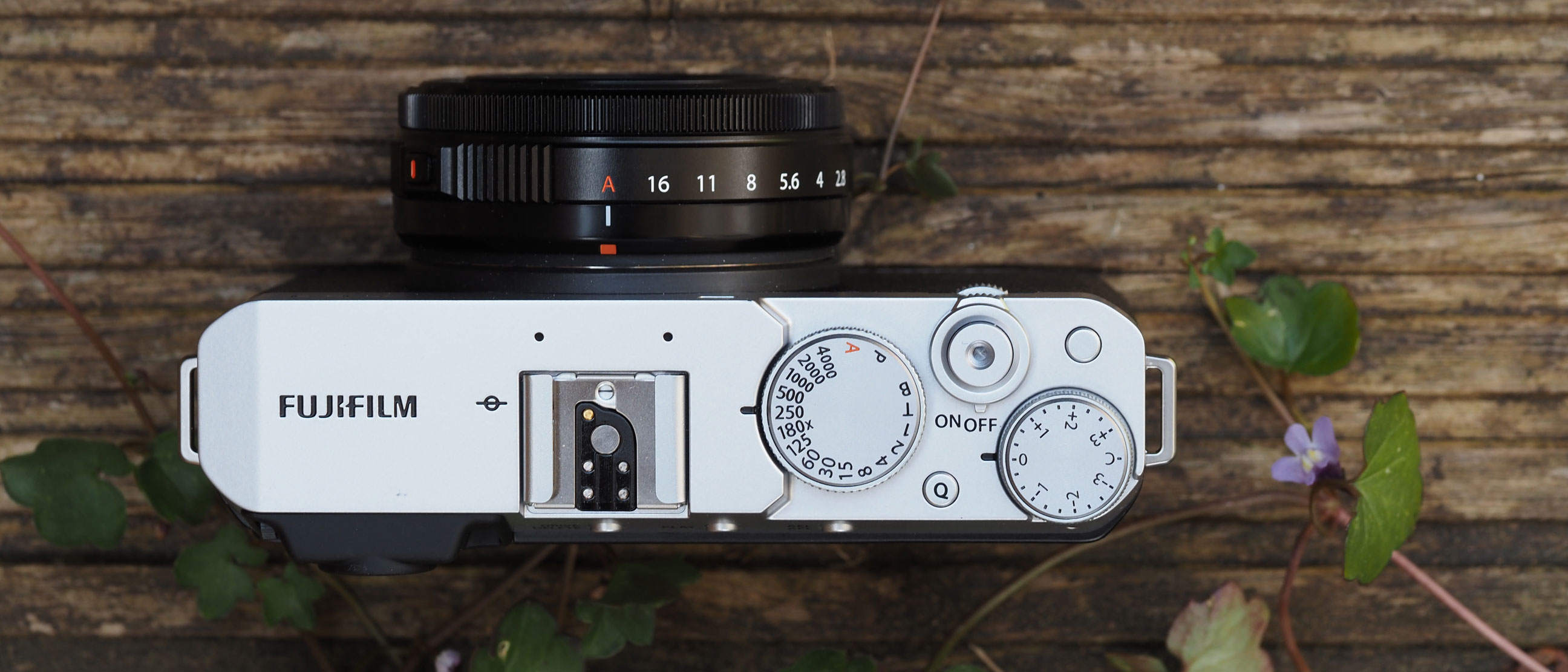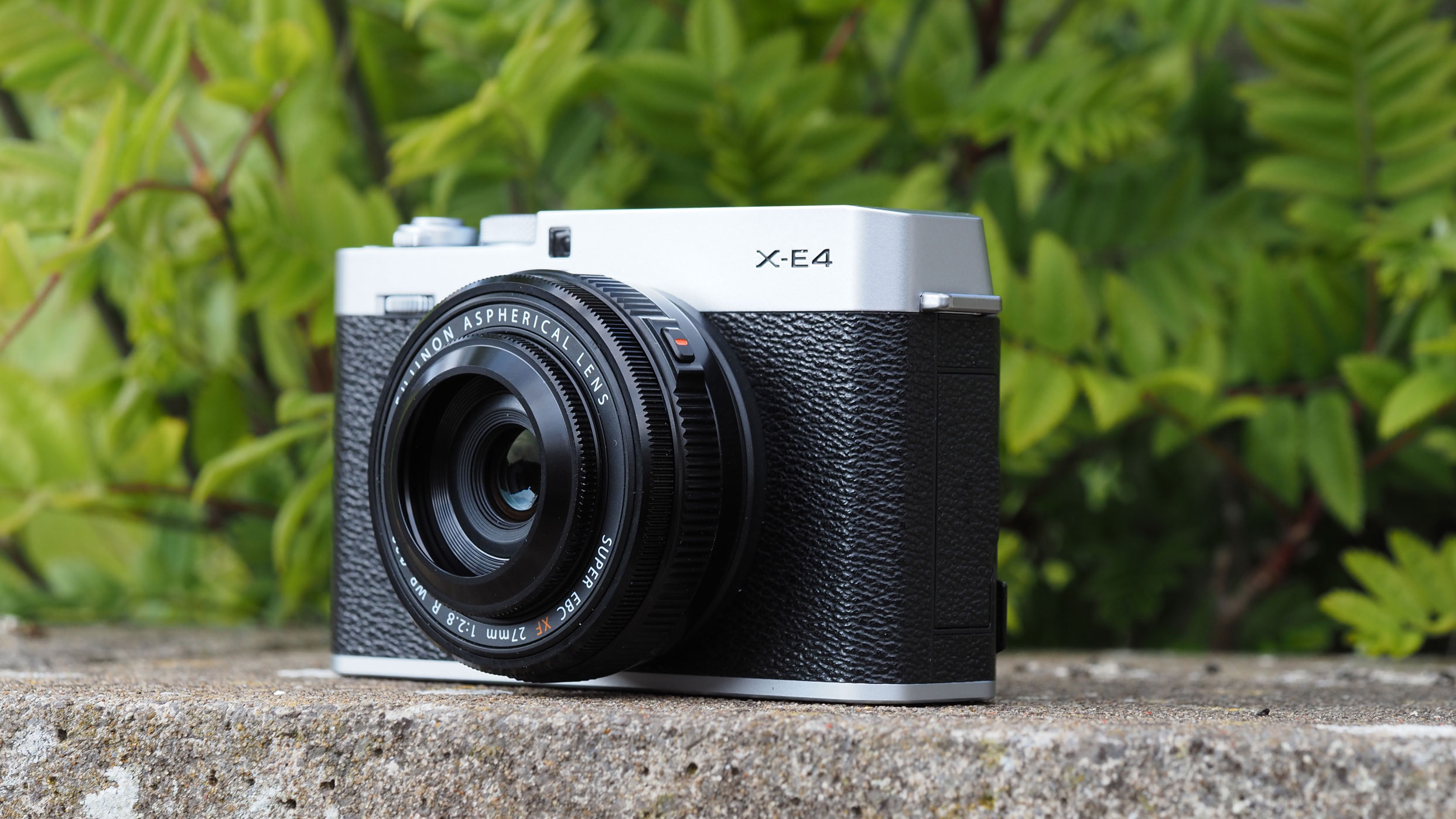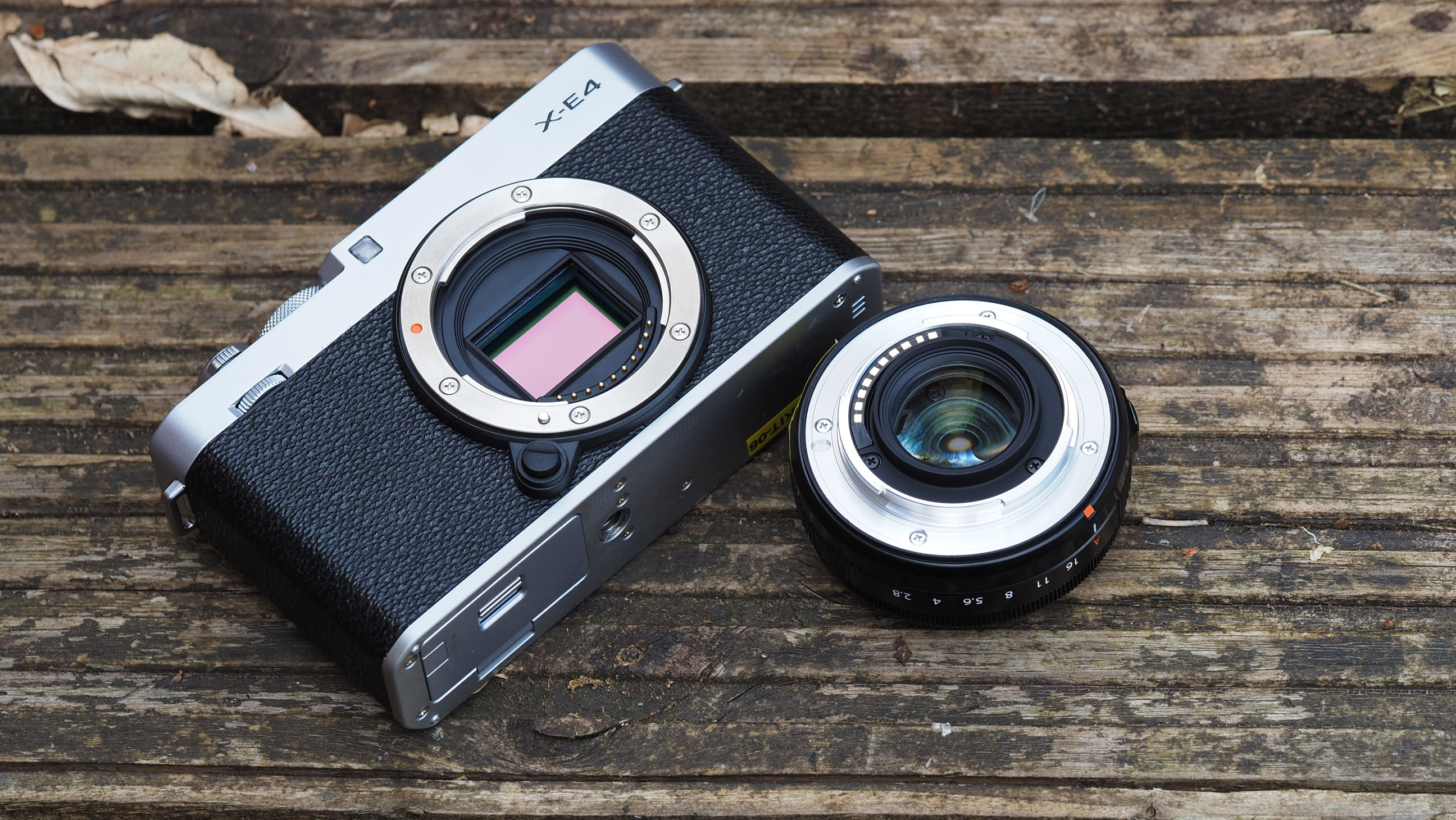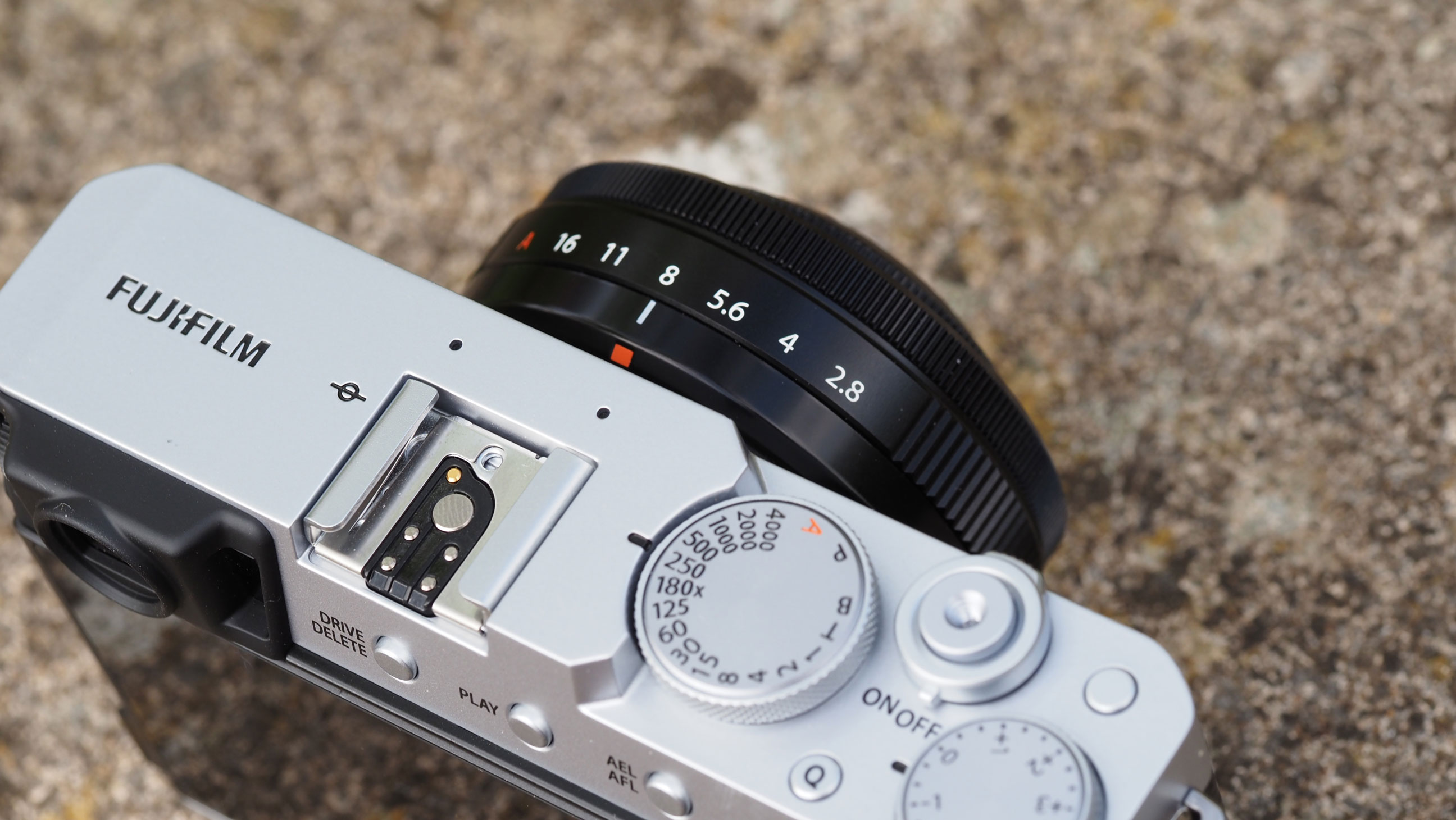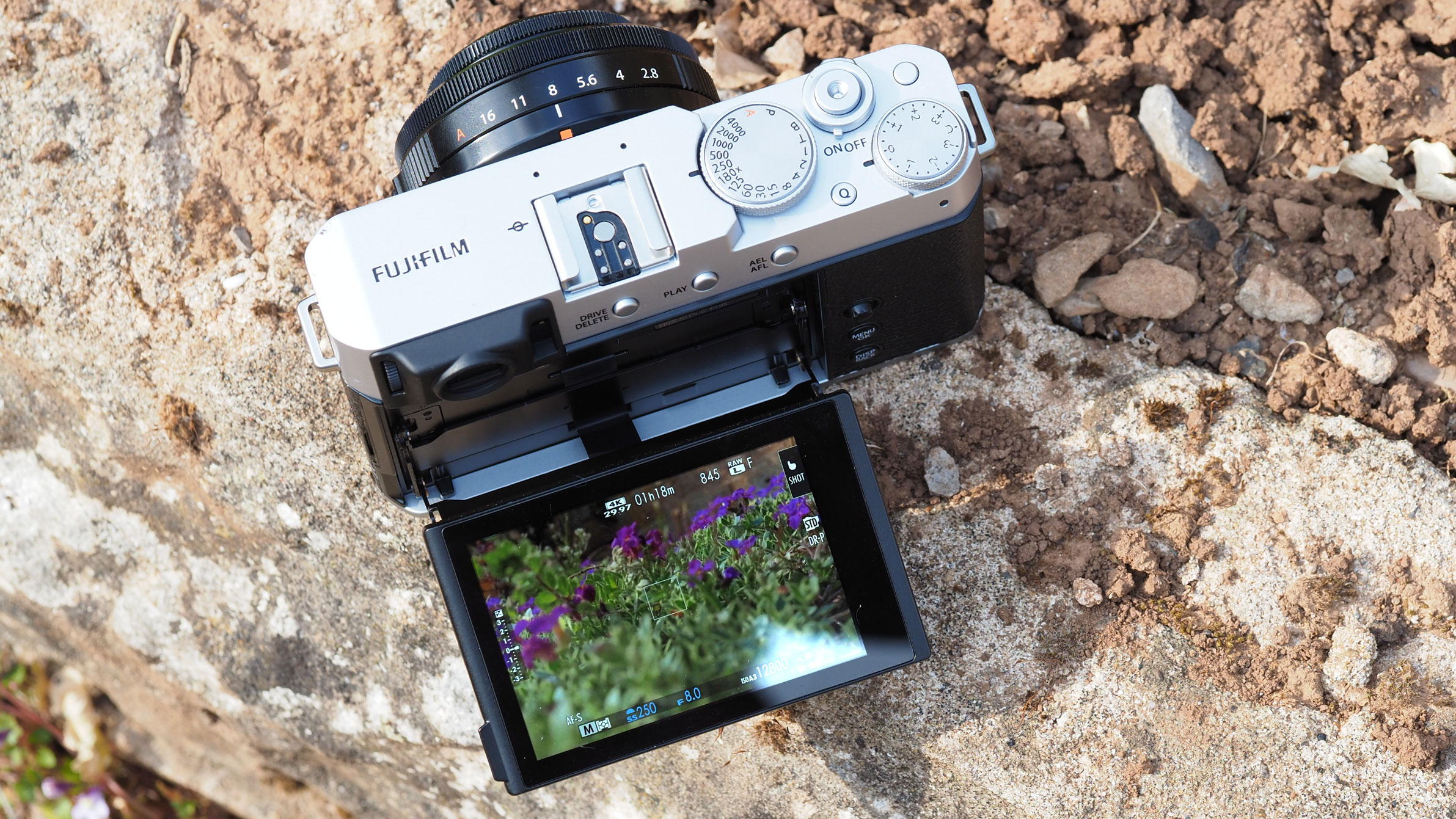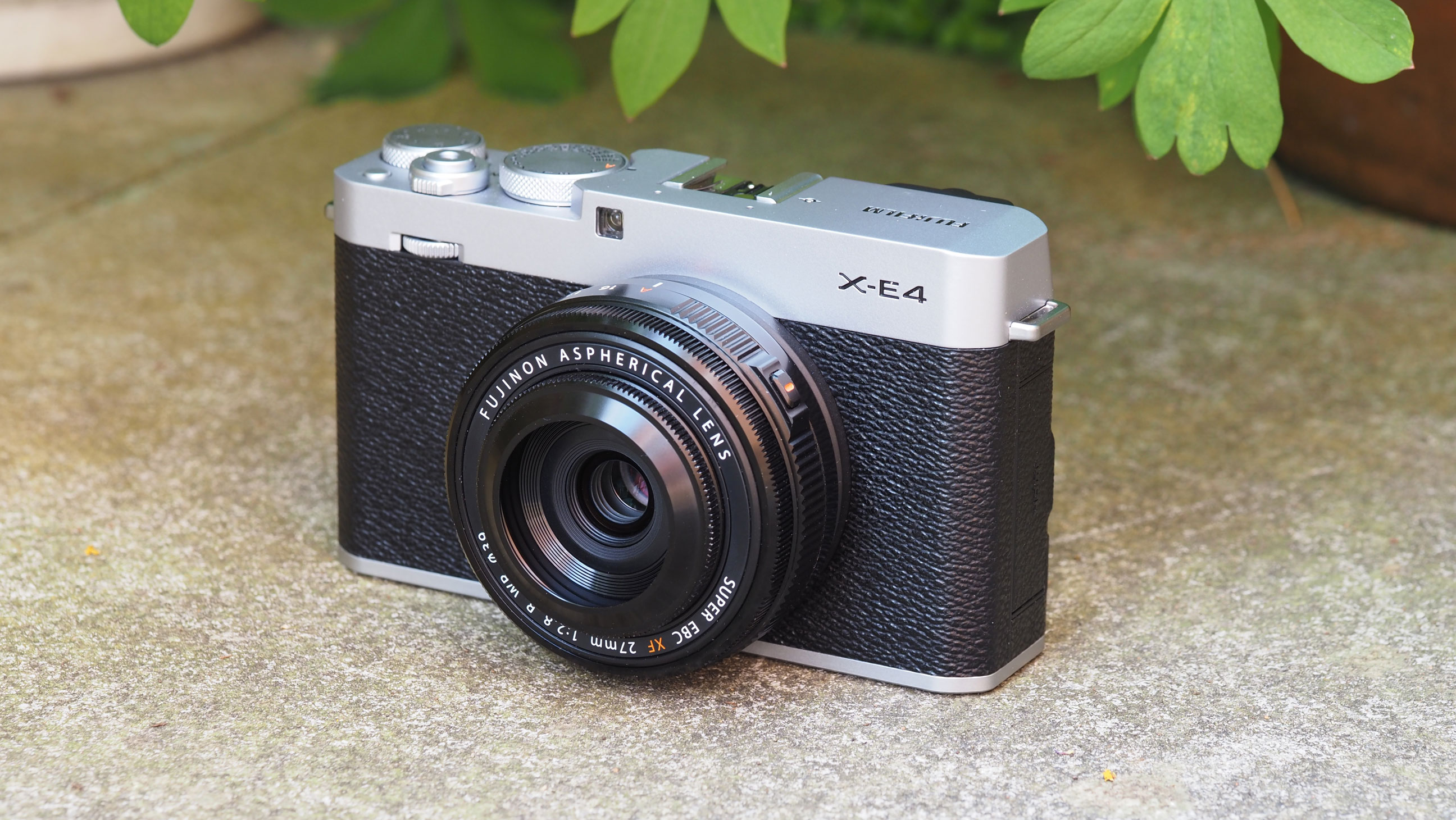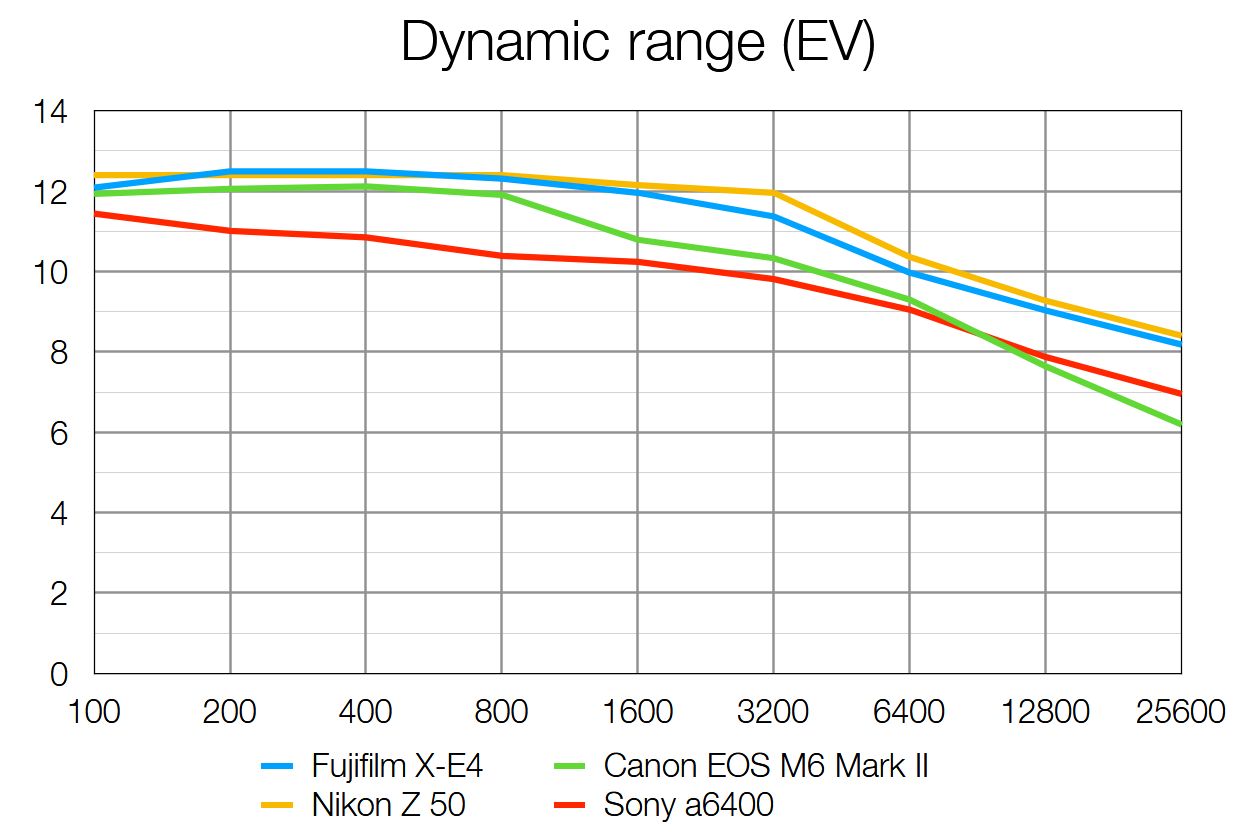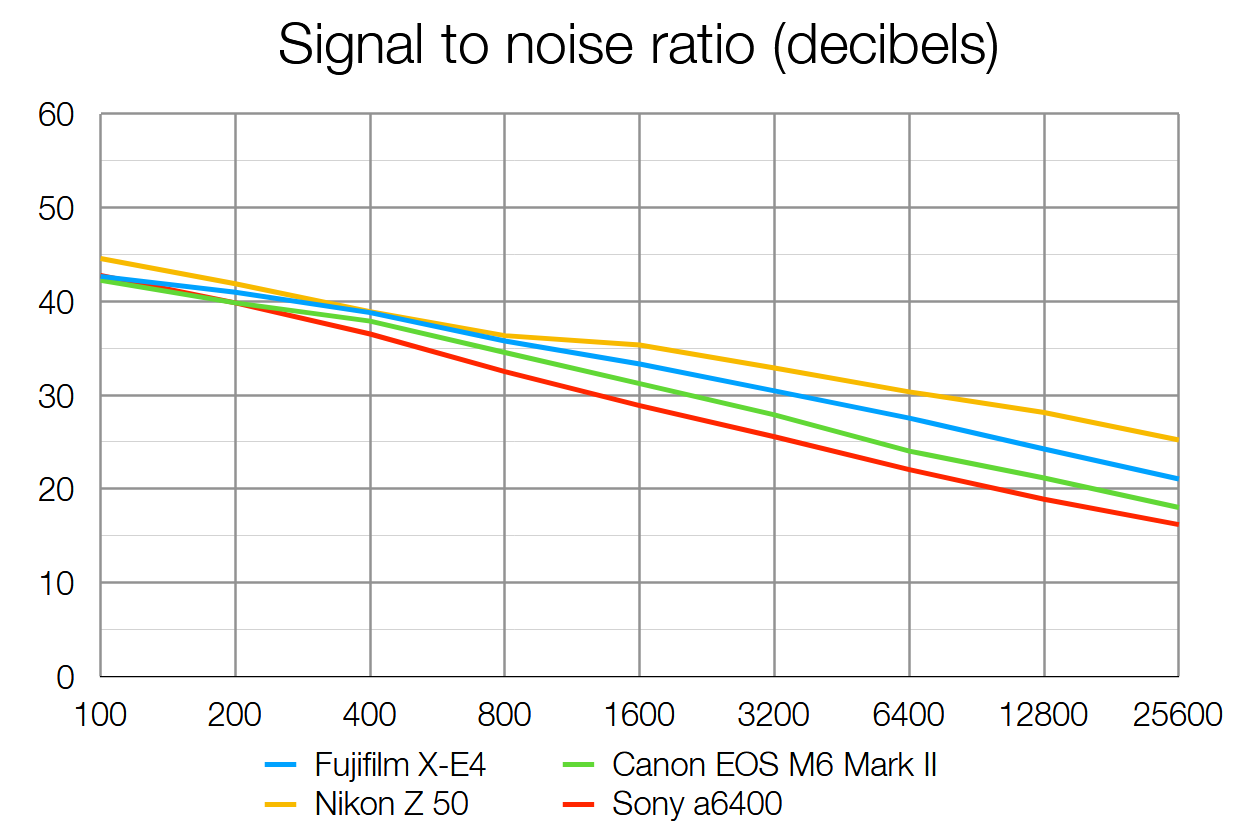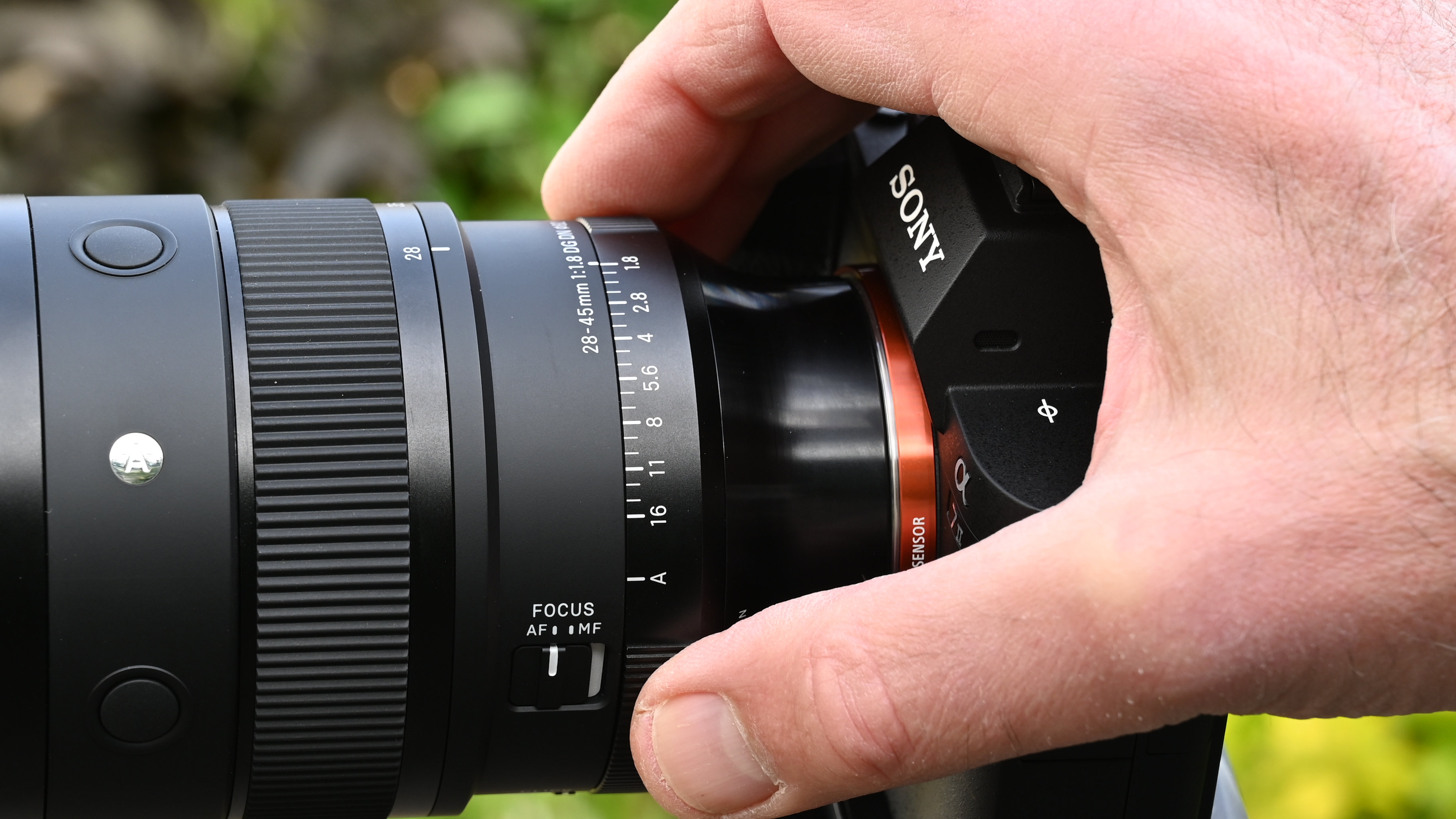Digital Camera World Verdict
While its small size and design doesn’t make it quite as versatile as a camera like the X-T4, the Fujifilm X-E4 is capable of producing the same quality images and it’s easy to carry everywhere. It would be ideal as a travel camera with Fujifilm's smaller prime lenses or zooms.
Pros
- +
Compact size
- +
Physical exposure controls
- +
Same image quality as X-T4
Cons
- -
No in-body stabilization
- -
Awkward with larger zooms
Why you can trust Digital Camera World
The Fujifilm X-E4 is the company's most compact interchangeable lens camera with the 26.1Mp X-Trans CMOS 4 sensor and X-Processor 4 processing engine. As the latest in the X-E series of mirrorless cameras, it has a rectangular rangefinder-like design rather than the mini DSLR-styling of the X-T series. It's for enthusiasts who value a classic, compact design over all the bells and whistles of the X-S10 and X-T4.
This is the fourth camera in Fujifilm's X-E series, following the design of previous versions closely, but with Fujifilm's latest 26.1MP X-Trans sensor. This gives it a modest increase in resolution over the previous Fujifilm X-E3, but the real gain is a newer generation of back-illuminated sensor design, which gives a step up in all-round image quality. It's the same sensor used in Fujifilm's flagship X-T4 model. This means it also gets a powerful on-sensor phase-detect AF system, with 425 focus points covering the whole image area.
The X-E4 not really designed for the same kind of user, though. It can shoot at a frame rate of 8fps with its mechanical shutter, or 10fps with its electronic shutter, but it's not really a sports camera, not least because its size and shape make the handling a little awkward with longer lenses.
It can also shoot 4K video, but at a maximum 30fps frame rate, and while the Fujifilm X-T4 and X-S10 have in-body stabilization, this camera does not, so for both stills and video you will be reliant on lens based stabilization, where available.
The other notable feature of the X-E4 is its kit lens. Most mirrorless cameras are sold with a zoom, but the X-E4 comes with a Fujinon XF27mm F2.8 R WR 'pancake' prime, with a 40mm effective focal length and a slim profile that perfectly matches the slim camera body.
Specifications
Sensor: APS-C, X-Trans CMOS 4, 23.5 x 15.6mm
Megapixels: 26.1Mp
Image size: 6240 x 4160 pixels
Shutter speed: Mechanical: 15min-1/4000 sec plus bulb, Electronic:15min to 1/32000sec
ISO range: 160-12,800 exp to 80-51,200
Exposure modes: Program, aperture priority, shutter priority, manual
Metering options: TTL 256-zone Multi metering, Average, Center weighted, Spot
Flash modes: External flash only 1st or 2nd Curtain, Auto FP(HSS) (excluding EF-X8), TTL: Auto, Standard, Slow Sync, Manual, Commander, Multi, off
LCD: 180° Tilting 3.0-inch 1,620,000-dot touchscreen LCD
Viewfinder: EVF, 0.39-inch 2.36million-dot OLED with 100% coverage
Storage: SD/SDHC/SDXC UHS-I
Connectivity: Wi-Fi, Bluetooth, USB-C, HDMI Micro (Type D), 3.5mm mic/remote
Battery: Rechargeable Li-ion NP-W126S
Dimensions: 121.3 x 72.9 x 32.7mm
Weight: 364g including battery and SD card
Key features
Two things set the Fujifilm X-E4 apart from regular mirrorless cameras. One is the rectangular 'rangefinder' style design which is, admittedly, not that unusual, though most mirrorless cameras are designed to look like DSLRs, with an electronic viewfinder on the top of the camera. On the X-E4, the viewfinder is built into the back top left corner. The X-E4 doesn't have a grip for the fingers of your right hand, either – but if you decide it's too awkward to hold as a result, you can get an optional handgrip.
The best camera deals, reviews, product advice, and unmissable photography news, direct to your inbox!
What's definitely different about the X-E4 is the external exposure controls. This has become a Fujifilm trademark. Where most cameras have a mode dial and set the lens aperture and shutter speed electronically via menus and on-screen displays, the X-E4 has an old-school shutter speed dial on the top and the 27mm kit lens has a physical aperture ring.
Both of these have 'A' (automatic) positions, so you still have the usual program AE, aperture-priority, shutter-priority and manual exposure modes, but you achieve them with combinations of aperture dial and shutter dial settings. Old-school film photographers will love it, newer photographers might have to do a little head-scratching – but only at first.
The Fujinon XF27mm F2.8 R WR kit lens deserves a closer look, too. This is a reworked version of a lens Fujifilm has had in its X-mount line-up for a while. This version, tough, adds a physical aperture ring and weather sealing, two small steps which are really welcome.
It's a bold move for Fujifilm to bundle a prime lens with this camera rather than a zoom, but it shows the company is aiming this camera at a particular type of camera enthusiast.
You can, of course, use any X-mount lens with the X-E4, and you can buy it body-only for use with lenses you've already got, for example.
It's worth pointing out that this is not Fujifilm's only classic rangefinder-style camera. There's also the Fujifilm X100V, with its hybrid optical/digital viewfinder and fixed 35mm f/2 equivalent lens, and the more advanced Fujifilm X-Pro3, also with a hybrid viewfinder and the ability to swap lenses.
Build and handling
The X-E4 handles well and the slim rectangular body is a good match for the XF27mm F2.8 kit lens. If you switch to a larger lens, however, it doesn't feel quite as well balanced, and if you do want to use longer Fujinon zooms, you might be happier with the Fujifilm X-S10 or X-T4, both of which have integrated grips.
We did use the X-E4 with the Fujinon XF16-80mm F4 for our video tests, and that did feel a little large for the camera body. The XF27mm lens may have a new aperture ring and weatherproofing, but it appears to have the somewhat noisy AF actuator of the original XF27mm, so while that's acceptable for stills, it's not great for video – the focus transitions are quite choppy and the camera mic can pick up the motor noise.
The EVF isn't the highest-resolution display out there, but with 2.36 million dots it's still perfectly crisp and clear for a camera like this.
The rear LCD is very good too, and it even has a tilting mechanism, though it doesn't incorporate a sideways tilt like the X-T4 and the X-S10 is better still, with a fully articulating screen.
The X-E4's LCD is touch-sensitive, and it's really useful to be able to tap the screen to switch focus points, especially with the camera on a tripod and filming video. What is annoying, though, is that the screen flips upside down if your 'tapping' finger gets close to the EVF's eye sensor. It's as if the camera imagines you're shooting a selfie, even when the screen angle is quite shallow. This proved pretty annoying during our video experiments.
In fairness, although the X-E4 can shoot really nice 4K video, it's not really a video specialist – there isn't even a dedicated video record button.
Round the back there is no four-way controller, just a small joystick. That's fine – you don't really miss the D-pad at all (the buttons on previous models have been a bit too easy to press by accident), and the joystick takes care of all the menu navigation and focus point settings.
On the front there is a single control wheel, which is all this camera really needs. This does have a central 'click' action which can be a little too easy to activate unintentionally while you're trying to spin the wheel.
Performance
The X-E4's still image quality is everything we've come to expect from Fujifilm cameras. You can use the in-built Film Simulations for capturing JPEGs or you can shoot RAW if you want to choose a color profile later.
This camera does have an interesting Dynamic Range Priority mode which adjusts the camera's ISO and tone curve to match the brightness range of the scene and, if you're shooting JPEGs, it will tweak the highlight and shadow curve regions to provide the kind of wide exposure latitude you might once have got from color negative film. Camera JPEGs can occasionally look a little anaemic as a result, but you do at least have a wide range of tones to work with during editing. It's almost like the stills equivalent of log modes in video.
Speaking of video, the X-E4 shoots oversampled 6K to produce its 4K video files, which are sharp and full of detail. We did take a few hours out of the office to shoot some sample video, but with no in-body stabilization this is a camera that's best used on a tripod, or perhaps on a gimbal.
See our sample video below:
Lab results
We compared the lab results from the Fujifilm X-E4 against three rival APS-C mirrorless cameras costing similar money: the Canon EOS M6 Mark II, Nikon Z 50 and Sony a6400.
Resolution:
Despite 'only' having a 26.1MP sensor, the X-E4's X-Trans 4 sensor is excellent and delivers images so crisp it can match the 32.5MP EOS M6 II for fine detail capture at lower sensitivities, and even manages to beat the Canon at ISO 3200 and above - impressive stuff. The 24.2MP Sony a6400 and 20.9MP NIkon Z 50 perform exactly where we'd expect for detail capture relative to the 26.1MP X-E4.
Dynamic range:
Dynamic range is a measure of a camera's ability to record extreme brightness ranges and still retain detail in the brightest and darkest parts of the scene. It's measured in EV (exposure values, or 'stops').
The X-E4 is capable of capturing plenty of dynamic range - only the Nikon Z 50 can rival it.
Signal to noise ratio:
This test compares the amount of random noise generated by the camera at different ISO settings as a proportion of the actual image information (the 'signal'). Higher values are better and we expect to see the signal to ratio fall as the ISO is increased.
The X-E4 performs very well in this test, beating both the Canon and Sony competition. The Nikon Z 50 does pull ahead of the Fujifilm camera at higher sensitivities, but we'd expect this given the Nikon's lower megapixel count. By virtue of having fewer photosites ('pixels') spread over the same APS-C size sensor, each of the Z 50's sensor photosites can be larger and more light sensitive, resulting in less high ISO image noise and a better signal to noise ratio.
Verdict
The Fujifilm X-E4 has the same sensor as the mighty Fujifilm X-T4 and produces images of the same quality – but in reality it's a very different sort of camera. The X-T4 (and the Fujifilm X-S10) are all-rounders that can tackle all kinds of still and video work. Indeed, the X-T4 is one of the best 4K video/stills cameras around right now.
Instead, the X-E4 is aimed more at enthusiasts looking for the handling experience of a traditional camera, or travel photographers who want a compact and portable camera with a bit of class. Here, the X-E4 is helped by its XF27mm F2.8 lens, which doesn't just look and feel like a classy optic, but delivers very good performance that's a cut above the average 'kit' lens.
The X-E4 works best with this lens or with Fujifilm's other compact prime lenses. It's a camera you would choose for the physical experience of using it – or just to look at!
Read more:
• Best Fujifilm cameras
• Best mirrorless cameras
• Best Fujifilm lenses
• Best travel cameras
• Best vlogging cameras
• Best enthusiast cameras

Rod is an independent photography journalist and editor, and a long-standing Digital Camera World contributor, having previously worked as DCW's Group Reviews editor. Before that he has been technique editor on N-Photo, Head of Testing for the photography division and Camera Channel editor on TechRadar, as well as contributing to many other publications. He has been writing about photography technique, photo editing and digital cameras since they first appeared, and before that began his career writing about film photography. He has used and reviewed practically every interchangeable lens camera launched in the past 20 years, from entry-level DSLRs to medium format cameras, together with lenses, tripods, gimbals, light meters, camera bags and more. Rod has his own camera gear blog at fotovolo.com but also writes about photo-editing applications and techniques at lifeafterphotoshop.com
